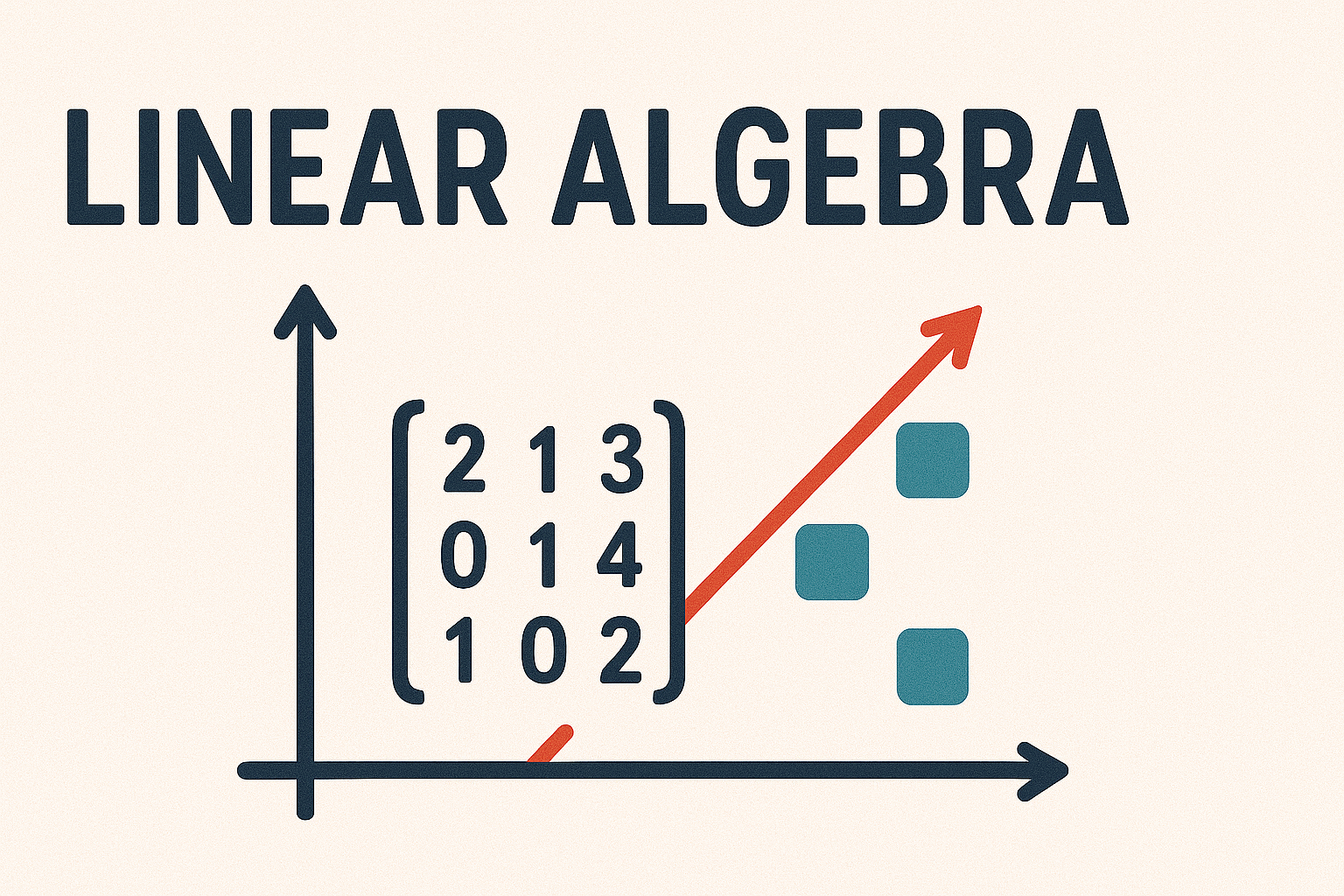1.6. Inverse matrix#
We have seen that matrix multiplication is defined for matrices of a certain size this is not true for the division of two matrices. However, for certain square matrices it may be possible to compute the inverse matrix which can be multiplied by the matrix to achieve the same effect. If we consider the simpler case involving numbers, the multiplicative inverse of a number \(x\) is a number denoted by \(x^{-1}\) that when multiplied by \(x\) results in the multiplicative identity 1, so the multiplicative inverse of \(x\) is \(\dfrac{1}{x}\). For matrices, the multiplicate identity is the identity matrix, so we can define a multiplicative inverse with respect to matrix multiplication.
Definition 1.12 (Inverse matrix)
Let \(A\) be a non-zero \(n \times n\) matrix. Then, if there exist an \(n \times n\) matrix \(A^{-1}\), such that \(A^{-1}A = I_n,\) we say that \(A^{-1}\) is the inverse of the matrix \(A\).
For example, given the matrix \(A = \begin{pmatrix} 1 & 1 \\ 1 & 2 \end{pmatrix}\) then its inverse is \(A^{-1} = \begin{pmatrix} 2 & -1 \\ -1 & 1 \end{pmatrix}\) since
We could also show this by calculating \(A^{-1}A\)
Note
Not all square matrices have an inverse
If a matrix does not have an inverse it has a determinant of zero and is said to be singular
If a matrix has an inverse it has a non-zero determinant and it is said to be non-singular or invertible
An inverse of a square matrix is unique
1.6.1. The adjoint of a matrix#
Definition 1.13 (Adjoint of a matrix)
The adjoint (also known as the adjugate) of a square matrix \(A\) is denoted by \(\operatorname{adj}(A)\) and is the transpose of the matrix of cofactors of \(A\)
Example 1.10
Calculate the adjoint of the following matrices:
(i) \(\begin{pmatrix} a & b \\ c & d \end{pmatrix}\); (ii) \(\begin{pmatrix} 5 & 2 \\ 3 & 4 \end{pmatrix}\); (iii) \(\begin{pmatrix} 1 & 0 & 3 \\ 4 & -2 & 1 \\ 2 & 1 & 3 \end{pmatrix}\).
Solution
(i)
(ii)
(iii)
1.6.2. Calculating a matrix inverse using the adjoint-determinant formula#
There are several methods used to calculate the inverse of a matrix. For smaller matrices we can use the adjoint-determinant formula.
Theorem 1.7 (Adjoint-determinant formula)
The inverse of a non-singular square matrix \(A\) can be calculated using
In particular, \(A\) is invertible if and only if \(\det(A)\neq 0\).
It is useful to calculate the determinant first to check that it is non-zero before calculating the adjoint. For example, let’s calculate the inverse of
Here \(\det(A) = 1(4) - 2(3) = 4 - 6 = -2\) which is non-zero so we know that an inverse exists for \(A\). Next we calculate the adjoint
So using equation (1.10) the inverse of \(A\) is
We can check that this is the correct inverse by calculating \(AA^{-1}\)
So we know our inverse matrix is correct.
Example 1.11
Calculate the inverses of the following matrices if they exist:
(i) \(A = \begin{pmatrix}1 & 0 \\ 3 & 2\end{pmatrix}\); (ii) \(B = \begin{pmatrix} 1 & 2 & 0 \\ -2 & 1 & 1 \\ 1 & 0 & 3 \end{pmatrix}\); (iii) \(C = \begin{pmatrix}1 & 2 & 3 \\ 4 & 5 & 6 \\ 7 & 8 & 9 \end{pmatrix}\)
Solution
(i)
Check answer:
(ii)
Check answer:
(iii)
Since \(\det(C)=0\) then \(C\) is singular and does not have an inverse.
Theorem 1.8 (Properties of inverse matrices)
Let \(A\) and \(B\) be two invertible \(n \times n\) matrices, then the following hold:
\(AB\) is also invertible and \((AB)^{-1} = B^{-1}A^{-1}.\)
\((A^m)^{-1} = (A^{-1})^m\) for all positive integers \(m\).
\(A^\mathsf{T}\) is also invertible and \((A^\mathsf{T})^{-1} = (A^{-1})^\mathsf{T}\).
